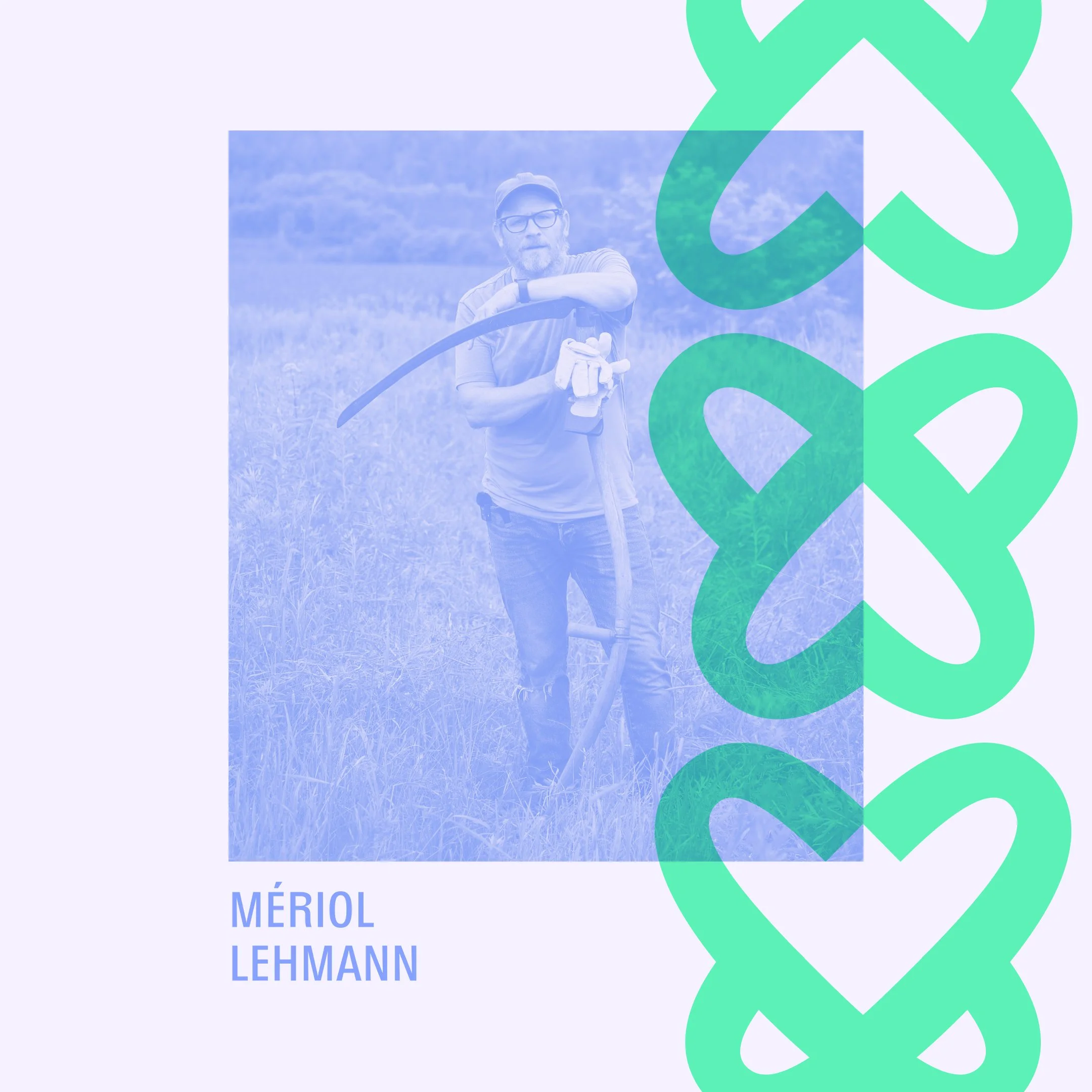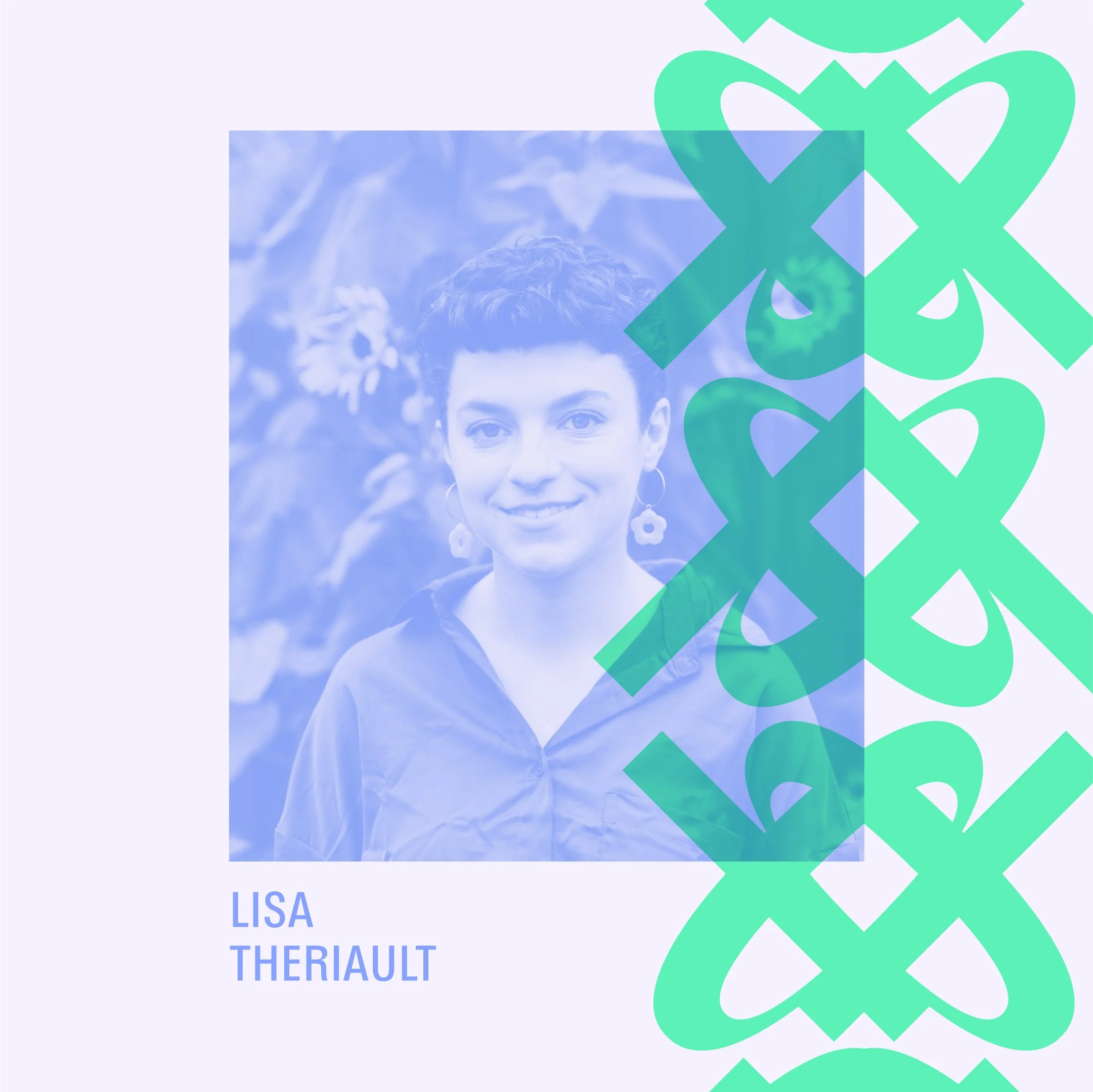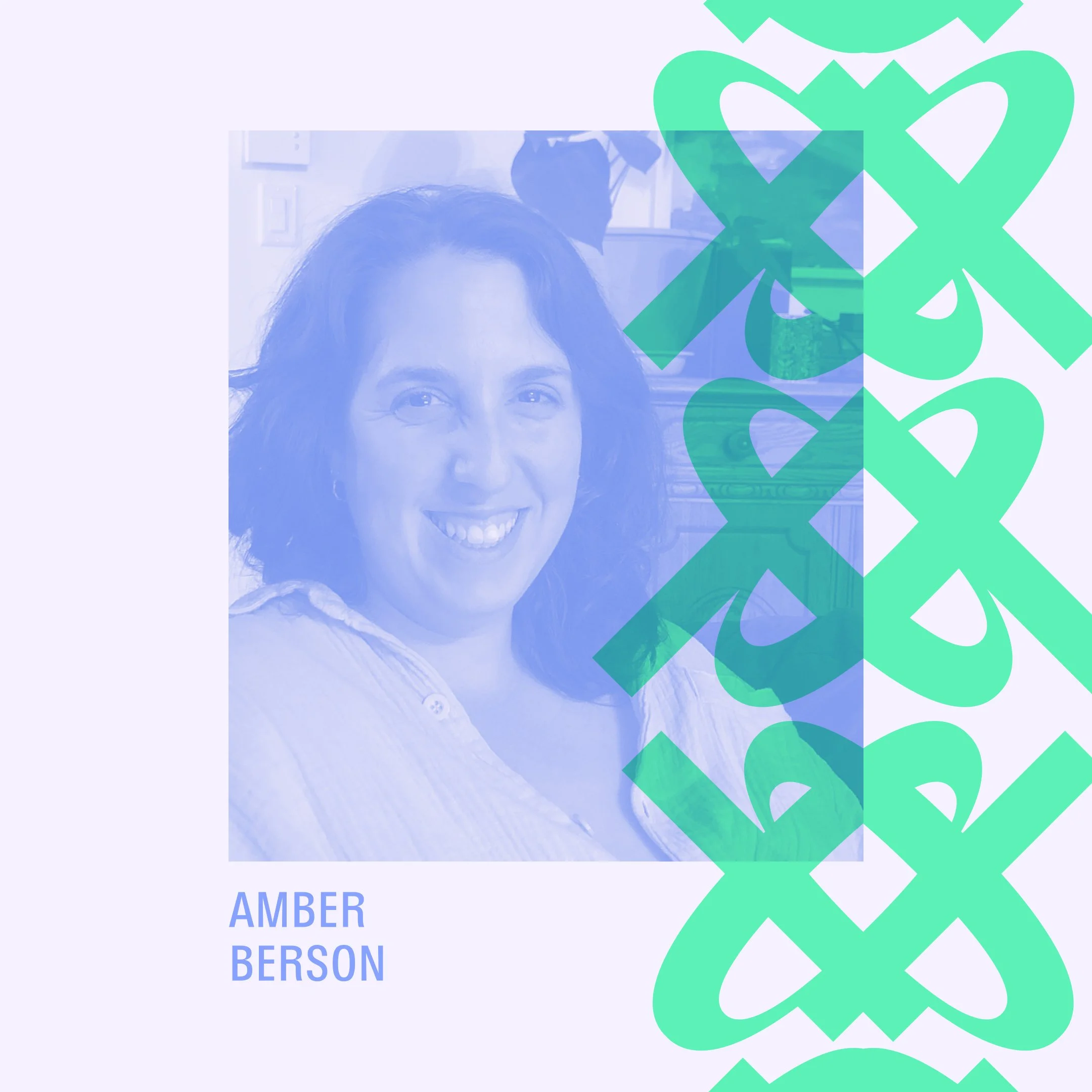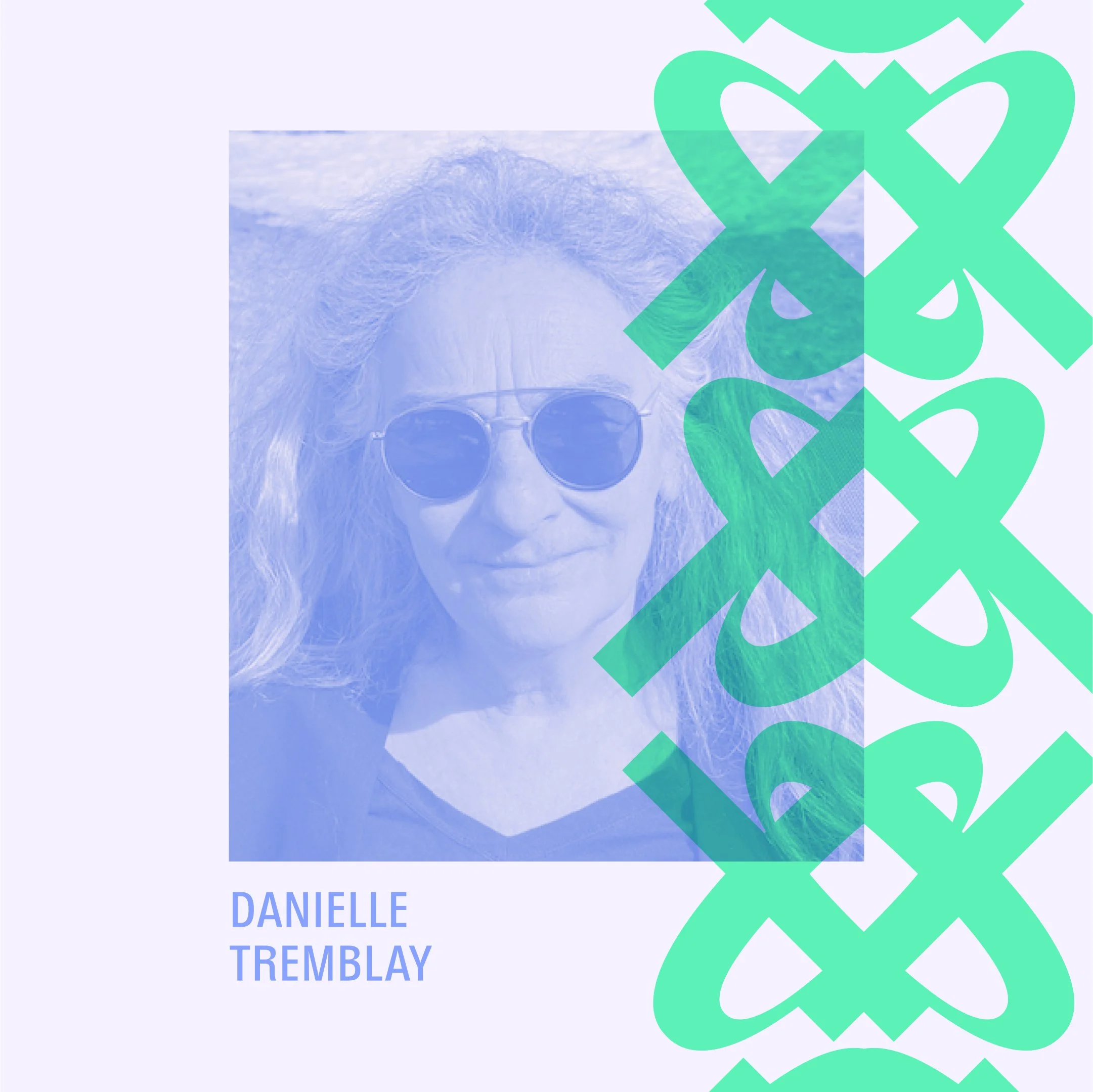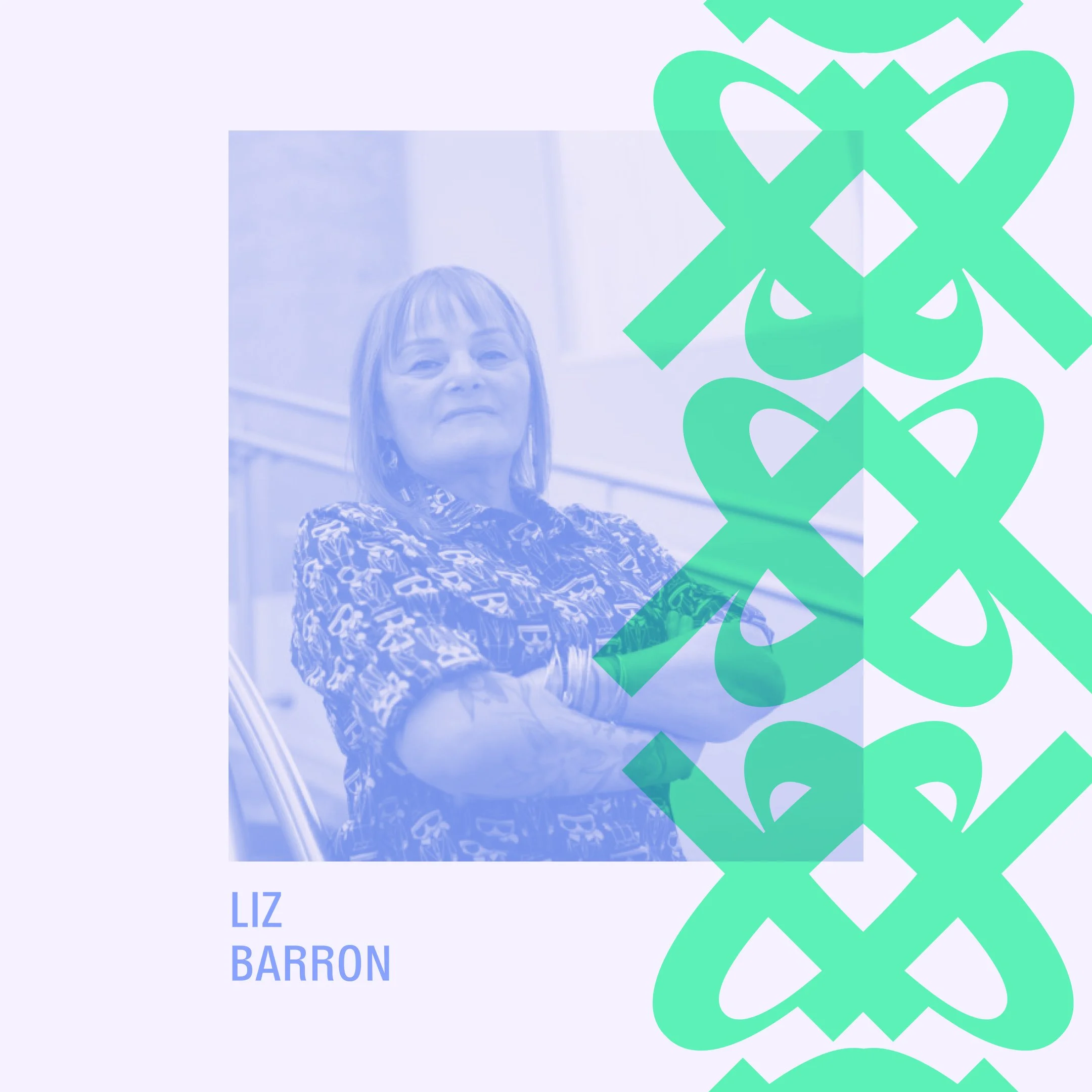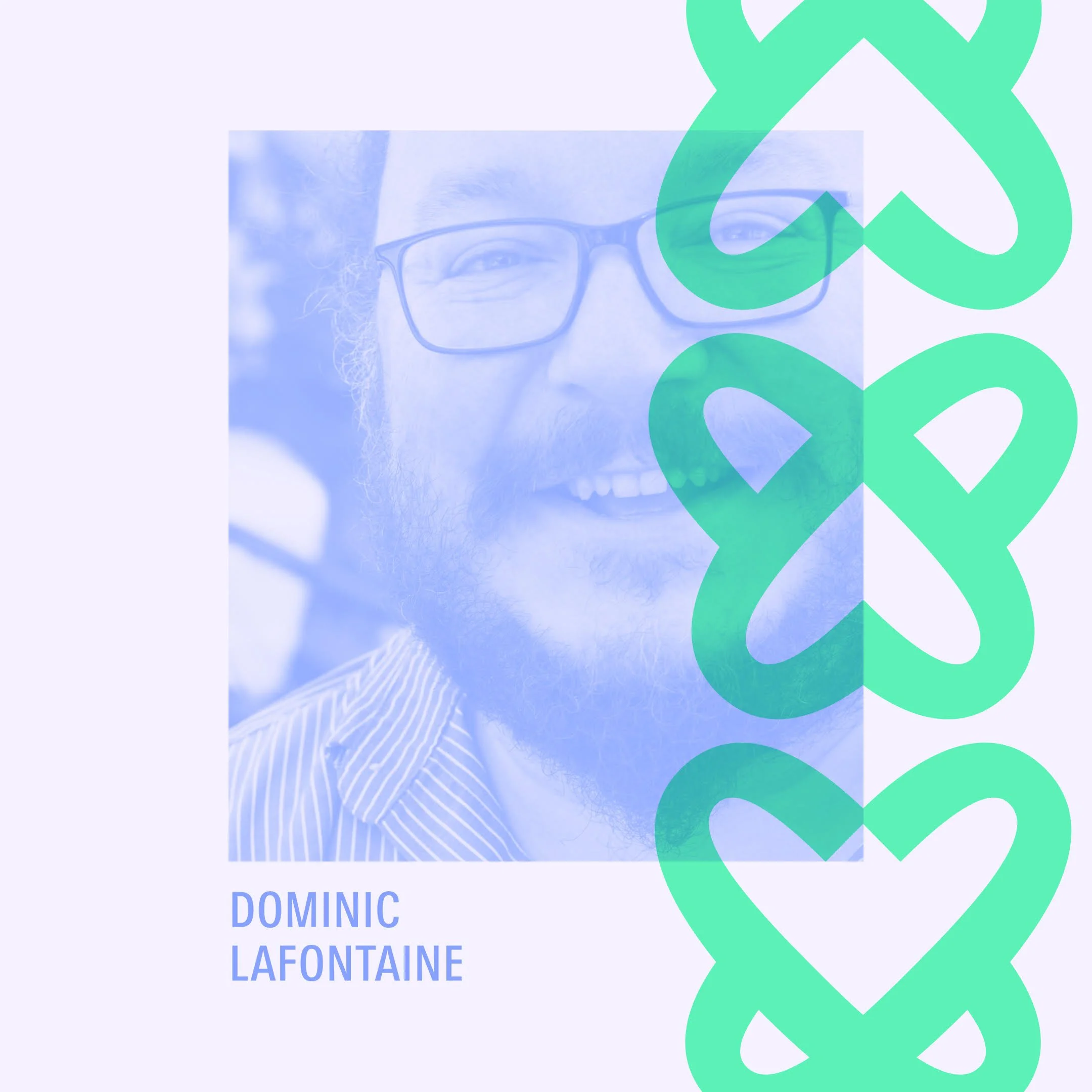Panelists and Moderators
Rebecca Belmore, born in 1960 in Upsala, Ontario, is a Vancouver-based artist whose practice spans sculpture, installation, video, photography and performance. Central to her work is the body in relation to history, place and Indigeneity. Recent solo exhibitions include Turbulent Water at Griffith University in Brisbane and Facing the Monumental at the Art Gallery of Ontario in Toronto. Her work has been featured in major international exhibitions such as the 2025 Hawai'i Triennial, the 2022 Whitney Biennial, the 2019 Istanbul Biennial and documenta 14. Belmore is the recipient of numerous awards, including the Audain Prize for the Visual Arts, the Governor General’s Award in Visual and Media Arts and the Gershon Iskowitz Prize. She holds honorary doctorates from Université Laval (Québec City), NSCAD University (Halifax), Emily Carr University of Art + Design (Vancouver) and OCAD University (Toronto).
Dr. Devon Smither is Associate Dean and Associate Professor of Art History and Museum Studies at the University of Lethbridge. Her research focuses on nation-building, modern art and women artists in early twentieth-century Canada and North America. She is co-author of CanadARThistories, the first open educational resource on Canadian and Indigenous art, and her work has been published in RACAR, Sociology Lens and the Literary Review of Canada.
Julia Caron Guillemette is an independent curator, writer and art historian based in Quebec City. Her practice, rooted in poetics and care, explores themes such as decolonization, agency, feminisms, gender identities, power relations and ecology. She is the co-artistic and administrative coordinator of the artist-run centre Ahkwayaonhkeh and associate curator for Manif d’art – The Quebec City Biennial. She has served as curator-educator at the Musée d’art contemporain de Baie-Saint-Paul and as a cultural mediator at the Musée national des beaux-arts du Québec. Holding a master’s degree in art history from Université Laval, she has published numerous texts, notably in Vie des arts, Esse and Inter. She is the co-curator of Ostentation (Université Laval, 2022) and Ywahentetha’ (VU and Ahkwayaonhkeh, 2025), and has curated L’Écho des contes and Cooke Sasseville: contre toute attente (4th edition of Jardin d’hiver, Manif d’art, 2025), as well as Dessiner le monde depuis ma fenêtre (Musée d’art contemporain de Baie-Saint-Paul, 2025).
Stefan St-Laurent, multidisciplinary artist and curator, was born in Moncton, New Brunswick, and lives and works in Gatineau. He was the invited curator for the Biennale d’art performatif de Rouyn-Noranda in 2008, as well as for the 28th and 29th editions of the Symposium international d’art contemporain de Baie-Saint-Paul in 2010 and 2011. From 2002 to 2011, he served as Curator at the artist-run centre SAW in Ottawa and has been an adjunct professor in the Department of Visual Arts at the University of Ottawa since 2010. His performance and video work has been presented in numerous galleries and institutions, including the Centre national de la photographie in Paris, Edsvik Konst och Kultur in Sollentuna (Sweden), YYZ Artists’ Outlet in Toronto, Western Front in Vancouver and the Art Gallery of Nova Scotia in Halifax. He has also worked as a curator and programmer for a range of artistic organizations and festivals, including the Lux Centre in London, the Cinémathèque québécoise in Montréal, the Festival international du cinéma francophone en Acadie in Moncton, the Rencontres internationales Vidéo Arts Plastiques in Basse-Normandie (France), as well as Pleasure Dome, the Images Festival of Independent Film and Video, and Vtape in Toronto. He was Director of the artist-run centre AXENÉO7 in Gatineau from 2014 to 2019 and is currently Artistic Lead, Special Projects, at SAW.
Edith Brunette is an artist, writer and researcher interested in the discourses that make and break power, as well as the various modes of political engagement, particularly in the field of art. Her recent projects, developed through collective forms of practice, have focused on the ways we inhabit the land, the political agency of artists and the act of speaking out in times of social crisis. These projects have been exhibited in numerous galleries and art centres in Canada, the Netherlands, Japan and Greece. Her writings have appeared in several art magazines and publications, including Esse, Liberté, ETC, Inter and Cassandre / Hors-Champs. She co-edited the books Going to, Making Do, Passing Just the Same (2021, with François Lemieux) and To Spoil the Party, to Set Our Joy Ablaze (2016, with Journée sans culture). She holds a PhD in political studies from the University of Ottawa, for which she received the Pierre Elliott Trudeau Foundation Scholarship. She is currently a research fellow at the University of California, Santa Cruz.
Originally from Switzerland, but living in Quebec for over 40 years, Mériol Lehmann is an artist-researcher who primarily works with photography, sound art and media arts. After dedicating his practice to a systemic approach to territory and representations of contemporary rurality, he is now interested in alternative modernities that reimagine our relationship with the living world in the context of ecological crises. His work has been presented in various events and exhibition venues, including the Photaumnales (Hauts-de-France), the Rencontres internationales de la photographie (Gaspésie), the Grantham Foundation for Art and the Environment (Saint-Edmond-de-Grantham), Espaces F (Matane), Centre Bang (Chicoutimi), VU Photo (Quebec City), the Palais des Paris (Takasaki, Japan), Sagamie (Alma), Galerie B-312 (Montreal) and Mois Multi (Quebec City). His films have been screened in Denmark, New Zealand, Austria, Italy, Germany, Mexico, Nigeria, Spain, France and Canada. He has also performed sound works in Nantes, Paris, Marseille, Rixheim, Huningue and Pessac (France); in Ghent (Belgium); and in Montreal, Ottawa, Quebec City, Victoriaville and Chicoutimi (Canada). He holds a master’s degree in visual arts from Université Laval and later pursued doctoral studies at the École multidisciplinaire de l’image of the Université du Québec en Outaouais.
Jenny Fraser is a digital native working within a fluid screen-based practice. In 2015, her video art was imprinted on a gold record and broadcast into outer space via Hobart (Tasmania, Australia) and Cape Canaveral (Florida, USA) as part of the Forever Now project—a follow-up to the Voyager Golden Records sent into space by NASA in 1977. She is a celebrated screen artist and was recognized in 2015 with awards for Newcomer Director in the International Documentary category at both the World Film Awards and the International Film Festival for Environment, Health and Culture. Fraser founded the online gallery cyberTribe in 1999, the Blackout Collective in 2002 and World Screen Culture in 2015. Since 2014, she has been presenting the SOLID Screen Festival and Retreat, first held at Innot Hot Springs in Far North Queensland. The event included the SOLID Screen Awards, which honoured 40 years of international Indigenous women's contributions to screen art forms. Fraser has a professional background in art and media education. She holds a Master of Indigenous Wellbeing from Southern Cross University in Lismore, New South Wales, and a PhD in the Art of Healing and Decolonisation from Batchelor Institute in the Northern Territory. She was an Associate Member of the Centre for Creative Arts at La Trobe University and, in 2015, served on the National Advisory Group for the Centre for Indigenous Story in Australia. As an industry advocate, she has participated in digital policy roundtables for the Canada Council for the Arts, imagineNATIVE Film + Media Arts Festival, the Australia Council's New Media Arts Board, the Experimental Arts Fund and the Aboriginal and Torres Strait Islander Arts Board, as well as for iDreaming TV. She has also served on numerous boards, including the Australian Network for Art and Technology, the Centre for Indigenous Story, Australian Teachers of Media, Queensland Museum and the inaugural illuminate-FNQ (Far North Queensland/First Nations Queensland) Indigenous Science Festival (2022).
Lisa Theriault is a visual artist originally from and currently based in Prince Edward Island. Through her artistic practice, she explores our relationship to place and how it both shapes and is shaped by society. She primarily creates drawings but also works in video, animation, installation and miniatures. Theriault holds a Bachelor of Fine Arts in Studio Art from Mount Allison University (Sackville, NB). She has notably presented her work at the Confederation Centre Art Gallery (Charlottetown, PE), Galerie Sans Nom (Moncton, NB), Galerie d’art Louise-et-Reuben-Cohen (Moncton, NB) and Artch (Montreal, QC). Her work has been supported by PEI Artist Grants, the Conseil des arts et des lettres du Québec and the Jeunes volontaires program (Emploi-Québec). Recent presentations include the exhibition Space, Place, Home at the Galerie d’art Louise-et-Reuben-Cohen at the Université de Moncton and a residency at the Annandale Artist Residency in 2022 (Annandale, PEI). She is currently the Executive Director of the artist-run centre This Town Is Small in Charlottetown, PEI.
Born in Zurich, Switzerland, Catherine Bodmer moved to Tiohtiá:ke/Mooniyang/Montreal in 1996 to pursue her studies in visual arts at the Université du Québec à Montréal (UQAM). Inspired by various forms of self-management and collaboration, she has been involved in artist-run centres for over 25 years. Having co-directed several centres, including La Centrale galerie Powerhouse and articule (1999–2009), she is also a founding member of VIVA! Art Action, a performance art festival born of a partnership between six Montreal artist-run centres. Since 2020, she has served as Executive Director of the Regroupement des centres d’artistes autogérés du Québec (RCAAQ), working to support and mobilize a network of over 80 artist-run centres across Quebec. Her commitment is grounded in the pursuit of inclusion, solidarity and participation. Her artistic practice encompasses photography, installation and site-specific works. The recipient of several research and creation grants, she was awarded the Duke and Duchess of York Prize in Photography from the Canada Council for the Arts in 2008. She has participated in artistic residencies, as well as solo and group exhibitions across Canada, in Mexico and in Taiwan. Critical texts on her work have been published in several specialized magazines in Canada, Poland, France and Italy.
Originally from Moncton, New Brunswick, Tam-Ca Vo-Van joined the artist-run centre SAW in Ottawa as Co-Artistic Director in 2002 and has served as its Director since 2005. She led the organization’s major capital expansion and renovation in 2019, undertaken as part of the City of Ottawa’s Arts Court Redevelopment Project. With a background in film and video programming, she has contributed to a range of artist-run and cultural organizations, working in programming, communications and advocacy, and remains active in the artistic and cultural advocacy communities in Ottawa and beyond. At SAW, she has curated and organized numerous exhibitions and public programs, including five editions of the Art Star Video Art Biennial and the group exhibition International Geographic. She currently serves on the boards of the Association des groupes en arts visuels francophones and the Artist-Run Centres and Collectives of Ontario. In 2023, she received the City of Ottawa’s Victor Tolgesy Arts Award in recognition of her contributions to the city’s cultural life.
Geneviève Matthieu is an artistic duo formed in Rouyn-Noranda (Quebec, Canada) in the late 1990s. Through performances, installations, videos, concerts and poetry, the duo creates collective representations and stages social tableaux inspired by art and life. Geneviève Matthieu has presented their work in numerous exhibitions and events across Canada and Europe, notably at the Musée d’art de Joliette, Usine C (Montreal), Fonderie Darling (Montreal), the 7a*11d Festival (Toronto), the Centre Wallonie-Bruxelles (Paris), La Capella (Barcelona) and the actoral festival (Marseille). Nominated for the Contemporary Art Prize of the Musée national des beaux-arts du Québec in 2018, the duo was long-listed for the Sobey Art Award in 2023, Canada’s most prestigious art prize administered by the National Gallery of Canada. They were selected in 2024 for a residency from the Conseil des arts et des lettres du Québec at Les Récollets in Paris, and in 2022 were laureates of the 2-12 residency program at the Cité internationale des arts in Paris. Matthieu passed away on February 4, 2025, from an aggressive cancer. The work of Geneviève Matthieu continues. Stay tuned.
Of Michi Saagiig Anishinaabe and Irish/Welsh descent, Lori Beavis is Executive Director of Centre d’art daphne, the first Indigenous artist-run centre in Tiohtià:ke/Mooniyang/Montreal. A citizen of Hiawatha First Nation at Rice Lake, Ontario, she is an independent curator, art educator and art historian. Her curatorial work, art practice and research articulate narrative and memory in the context of family and cultural history, and reflect on cultural identity, art education and self-representation. Her independent curatorial practice—both solo (Shelley Niro: Buffet [2016]; Jobena Petonoquot: Rebellion of my Ancestors [2018]; Shelley Niro: women, land, river [2019]; mazinigwaaso / to bead something – Barry Ace: Bandolier Bags as Cultural Conduit [2019]) and collaborative (The Rebel Yells: Dress and Political Re-dress in Contemporary Indigenous Art with Rhonda L. Meier [2015]; In/Visible: Body as Reflective Site with Maria Ezcurra and Natasha Reid [2019])—has consistently worked to further conversations on art, identity and self-representation. She serves on the Executive of the Indigenous Curatorial Collective / Collectif des commissaires autochtones (ICCA) Board of Directors.
Amber Berson is a writer, curator and art historian. She holds a doctoral degree from Queen’s University, where her SSHRC-funded research examined artist-run culture and feminist utopian thinking. She is the Executive Director of the Visual Arts Centre in Montreal and an Affiliate Assistant Professor in the Department of Art History at Concordia University, where she is pursuing a long-term research project on the history of equity-seeking artist-run centres. In her spare time, Berson works on knowledge equity projects, notably with the Art+Feminism Wikipedia project, where she has been involved in various capacities for over a decade.
Lori Blondeau is an influential contemporary artist of Cree, Saulteaux and Métis heritage from Saskatchewan, Canada (Treaty 4). Since the 1990s, she has developed an interdisciplinary artistic practice encompassing performance, photography and installation. Alongside her creative work, Blondeau has played a vital role in the Indigenous art community as co-founder and Executive Director of the Indigenous art collective TRIBE, significantly contributing to the prominence of Indigenous art and knowledge in Canada. Her notable performances, including We Want to Be Like Barbie That Bitch Has Everything (1995), Are You My Mother? (2002), States of Grace (2007) and Plains Horizon (2024), reflect a profound engagement with themes of identity and culture. Her photographic works, such as COSMOSQUAW (1996), Lonely Surfer Squaw (1997) and Asinîy Iskwew (2016), exhibit a compelling blend of precision, humour and strength. Blondeau’s work has been featured in numerous group and solo exhibitions, establishing her as a pivotal figure in contemporary art. In addition to her artistic practice, she has served as an Associate Professor at the University of Manitoba School of Art since 2018, where she mentors emerging artists. In 2021, she received the prestigious Governor General’s Award in Visual and Media Arts, recognizing her significant impact on the art landscape in Canada and beyond.
Danielle Tremblay is a pioneer in the contemporary art scene, with a track record that is intrinsically linked to that of the Galerie du Nouvel-Ontario since its founding as an artist-run centre in 1995. Danielle is an artist who works in service of other artists, firmly believing in the quality and substance of work produced by artists living in rural and remote areas, far from metropolitan centers. Over the years, she has overseen several hundred exhibitions and around twenty public art projects. If there is a rich and vibrant artistic practice and a community of visual artists in Sudbury and the surrounding area, it is in part thanks to Danielle’s contributions—whether by establishing the structures that allowed artists to exhibit and create in optimal conditions. It must be said—beyond her involvement with the GNO, Danielle also participated in the founding of several arts organizations: the Bureau des regroupements en arts visuels de l’Ontario (BRAVO), Artist-Run Centres and Collectives of Ontario (ARCCO), the Association des groupes en arts visuels francophones (AGAVF), and the Place des Arts du Grand Sudbury (PdA). With the Sudbury Alternative Art Fair (FAAS), Danielle and her dynamic team successfully propelled the GNO onto the national arts scene. Since its first edition in 2008, the fair—where artistic practices converge in a shared space-time—has fostered encounters among about thirty artists and fifteen artist-run centres from across the country. The highly anticipated 8th edition will take place in May 2026.
Jonathan Middleton is an artist, curator and publisher working between Toronto and Vancouver. He has over 26 years of experience in artist-run centres, having held curatorial and directorial positions since 1999 at Western Front, Or Gallery, Art Metropole and Vancouver Art Book Fair, and has served on the boards of Artspeak, CFMDC and Duplex Artists’ Society, among others. Middleton was the co-founder of the artist-run publishing organization Fillip, and later took on publishing roles at Information Office and C Magazine. He has a long history of advocacy for artist-run organizations, having served on the boards of the Pacific Association of Artist-Run Centres (PAARC), the Artist-Run Centres and Collectives of Ontario (ARCCO) and the Independent Film and Video Alliance (now IMAA-AAMI). He was also part of the small planning committee that led to the formation of the Artist-Run Centres and Collectives Conference (ARCA). Middleton currently works with ARCCO as coordinator, supporting the organization through its current rebuilding phase.
Liz Barron has been self-employed in the arts for the last 25 years. She is dedicated to building strategies and programs that target, motivate and engage Indigenous artists and organizations working across all cultural milieus. Her experience in arts management includes work with CARFAC, the Ottawa Symphony Orchestra and numerous Indigenous-led arts and culture not-for-profit organizations. She is one of the original founders of Urban Shaman Gallery in Winnipeg, and she has served as a mentor with the Manitoba Music Indigenous Mentorship program. She was the project manager for one of the largest Indigenous contemporary exhibitions in Canada, Close Encounters: The Next 500 Years, led by four Indigenous curators and featuring over 30 Indigenous contemporary artists. In 2021, she established the Barron Bursary at the Digital Arts Resource Centre in Ottawa to support an Indigenous moving image maker studying film at the University of Ottawa. She is currently the Director of Operations at the Indigenous Curatorial Collective.
Justin Seiji Waddell is an artist and Associate Professor at the School of Visual Art at the Alberta University of the Arts in Mohkinstsis (Calgary), Alberta. He is currently Vice President of CARFAC National and serves on the boards of Peripheral Review, C The Visual Arts Foundation, BlackFlash Magazine, the New Media Caucus, the Immigrant Council for Arts Innovation, and the Arts Culture and Education (ACE) committee of the National Association of Japanese Canadians. He has worked in various capacities at several artist-run centres, festivals, galleries and magazines across Canada, including Prefix Photo, Trinity Square Video, Lola Magazine, the Art Gallery of Ontario, The New Gallery, EMMEDIA and the Mountain Standard Time Performative Art Festival. He has served as Director at YYZ Artists’ Outlet and the Stride Art Gallery Association, and as a founding member of the all-ages art and music venue Local Library in Calgary. In the fall of 2024, he was an artist in residence with Past Wrongs, Future Choices, as part of the Japanese Canadian Legacies Project, in collaboration with the Centre for Global Studies and the Centre for Asia-Pacific Initiatives at the University of Victoria. In early 2025, he returned to Japan as an artist in residence with Studio Kura in Itoshima, Fukuoka Prefecture, to research the measurement of time and the history of bronze mirrors while building kinetic solar sculptures and making audio recordings from the Sea of Japan.
Jennifer Cherniack is an artist and arts administrator living in Ottawa. She makes art about language—the common, and not so common, ways in which we communicate information—with a particular interest in television, the internet and humour. She uses a variety of media in her work, drawing from television, advertising, educational materials, online and printed matter, and just about any other tools used to convey information. Cherniack has spent much of her professional life working for not-for-profit art organizations as a curator, educator, exhibitions coordinator and grant writer. She now works at the Canada Council for the Arts as a Program Officer in the Prizes department.
She holds a BFA from Western University (2003) and an MFA from Concordia University (2013), and has exhibited in a range of venues—from artist-run centres to a train car in Northern Ontario and the NY Art Book Fair. She is a proud member of the 44.4 Mother/Artist Collective, a growing group of women artists working on the unceded, unsurrendered territory of the Anishinaabe Algonquin Nation. Positioned at the intersection of motherhood and art, the collective shares knowledge, encourages creative self-actualization, empowers professional advancement, and advocates for representation and support for mothers and caregivers in the arts. Together, they advance new conversations and new work that address the lack of visibility of mothers in the arts.
Justin Bear L’Arrivée (he/him) is the Artistic Director at Urban Shaman Gallery in Winnipeg. He is of mixed Cree and Scottish ancestry from Peguis First Nation (maternal) and a citizen of the Manitoba Métis Federation (paternal). He is an arts administrator, facilitator and community worker passionate about revitalizing Indigenous ways of being through arts and culture. His practice is firmly rooted in community needs and is deeply informed by his work within the child welfare and disability systems, as well as in the artist-run centre sector.
Charlotte Panaccio-Letendre is the Executive and Artistic Director of Verticale – centre d’artistes. She joined the organization in 2011 to lead its transition toward off-site programming and to carry forward its infrastructure project. Her academic background in visual and media arts, art history and cultural organization management has enabled her to be actively involved on the boards of several organizations, both locally and nationally, including the RCAAQ (Regroupement des centres d’artistes autogérés du Québec) and ROCAL (Regroupement d’organismes culturels et d’artistes lavallois), as well as Skol, Culture Laval and the Table de concertation en culture de Villeray–Parc-Extension. More recently, she has been involved in the Grande mobilisation pour les arts au Québec (GMAQ), a movement bringing together artists and cultural workers from all disciplines—theatre, dance, circus, music, visual arts, literature, and more. Founded in March 2024, GMAQ advocates for greater recognition of the arts and increased cultural funding at both the provincial and federal levels. Its goal: to unite, mobilize and defend independent artists, whether they work individually, collectively or within project-based companies. Her interests focus primarily on diversifying modes of presentation in contemporary art and their impact on the concept of audience. Regional cultural development and the influence of organizations on this process are at the heart of her reflections and day-to-day work.
She holds a BFA from Western University (2003) and an MFA from Concordia University (2013), and has exhibited in a range of venues—from artist-run centres to a train car in Northern Ontario and the NY Art Book Fair. She is a proud member of the 44.4 Mother/Artist Collective, a growing group of women artists working on the unceded, unsurrendered territory of the Anishinaabe Algonquin Nation. Positioned at the intersection of motherhood and art, the collective shares knowledge, encourages creative self-actualization, empowers professional advancement, and advocates for representation and support for mothers and caregivers in the arts. Together, they advance new conversations and new work that address the lack of visibility of mothers in the arts.
Rémi Belliveau (they/them) is an Acadian interdisciplinary artist, musician and writer from Belliveau-Village (Memramcook Valley, New Brunswick), an Acadian hamlet located in Mi’kma’ki, the traditional unceded territory of the Mi’kmaq people. Their work seeks to deconstruct and reprogram the foundations, structures and imaginaries of the Acadian culture to which they belong, in the hopes of fostering (self)analysis and critical thinking. Recently, they were twice in the running for the Sobey Art Award (Atlantic finalist in 2021; longlisted in 2024), received the Claudine and Stephen Bronfman Fellowship in Contemporary Art (2022), were selected for the MOMENTA x RBC program (2023) and the Darling Foundry’s Ateliers Montréalais (2023–2026), and were awarded the Periculum Foundation grant for art discourse (2024). They are currently a finalist for the MNBAQ Contemporary Art Award (Musée national des beaux-arts du Québec, 2025). From 2014 to 2018, they co-directed Moncton’s Galerie Sans Nom with Annie France Noël.
Dominic Lafontaine is an Algonquin multimedia artist, poet and musician. His audacious, humourous and often absurd artworks explore the very notions of cultural identity, meaning and belonging. A graduate of Visual Arts at Ottawa University, he synthesizes his knowledge of traditional art forms with new media in order to redefine the visual language of contemporary native art. His motto: «Research, remix and repeat!»






